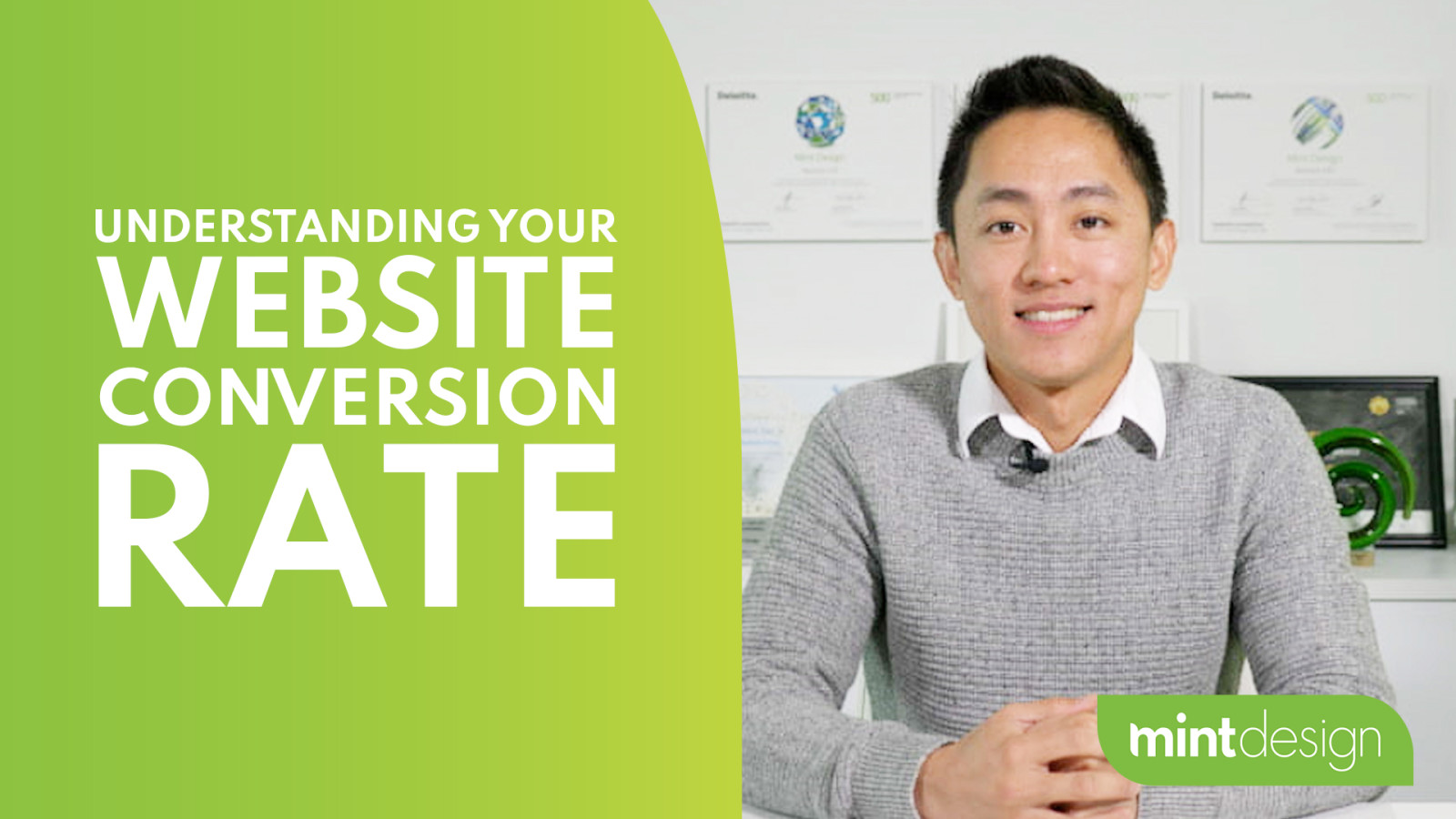Prefer to scan? Here's the video transcript
Do you know what the conversion rate of your website is? If you do, how confident are you with the accuracy of that conversion rate? If you don't, this video is for you!
Hi, my name is Pin and I'm one of the digital marketers here at Mint. In this video, I want to help you have a better understanding of Website Conversions. Today's video is going to be slightly longer than our usual videos. So, if you don't have the time to watch the entire video, which I strongly recommend, feel free to save it somewhere and come back later.
Now, let's dive right into it.
Firstly, what is a conversion? A conversion in the digital world refers to any valuable action that you as a business want your customers to take.
Now, think about your website, what do you want your customers to do? Do you want them to give you a call after learning about your business offerings? You might have a quote functionality on your website, you probably want them to be submitting the form so you can follow up with them afterward. If you are selling a physical product on your website, you probably want your website visitors to make a purchase right? These are all examples of website conversions.
This brings me to my second point. Conversions can come in many different forms. Some are more straightforward, and they are known as macro conversions, or hard conversions. Good examples are your typical online sales and website leads. In most cases, they are closely related to your business revenue. In other words, macro conversions demonstrate clear intent.
On the other hand, the not-so-straightforward ones are called micro conversions, or soft conversions. Good examples include signing up for an email newsletter, watching a video about your page, or downloading a free eBook. Usually, micro conversions are positive indications of your website visitors progressing towards the macro conversions. In other words, micro conversions demonstrate clear interest.
One of our B2B clients sells their products through a network of retailers and stockists. In this case, their micro conversions are "Finding A Stockist" or "Finding A Retailer". One way to track this is, anytime the website visitors leave the website to go to a retailer or stockist website, we track that as a micro conversion.
Now, moving on to the third point - what is a conversion rate? And how do you calculate that?
Well, this is actually very simple. Assuming that you have 100 people visiting your website, if 5 of them convert, you have a 5% conversion rate. Easy, right?
So, why is this calculation so important? Because it can actually make your business more profitable.
If you don't bother about improving your conversion rate, you'll need to spend more money driving more website visitors. This is because, if your conversion rate stays the same, the only way for you to get more conversions is by having more website visitors.
On the other hand, if you could improve your conversion rate, you actually get more conversions without needing to spend more. I'm sure that sounds like a very interesting proposition to you.
The conversion rate is typically found in your Google Analytics. If you're running advertising campaigns and have set up the tracking properly, you may even have a conversion rate breakdown for those advertising channels as well.
Now, moving to the fourth and also my last point, it is possible for your website to track multiple conversions at the same time. You may have one macro conversion and three other micro conversions.
So, let's do something fun here. Imagine yourself as an emergency plumber. The two most important conversions on your website are probably going to be "Making a phone call" and, "Requesting for a quote".
This means you will have two different conversion rates: a phone call conversion rate and a request quote conversion rate. Not to forget, you will also have the third conversion rate, an overall website conversion rate that takes both phone calls and requested quotes into account.
Going back to our role-playing, if we are emergency plumbers ourselves, it is not difficult to imagine how our potential customers would feel when they have a clogged drain or damaged pipes in their homes. Instead of taking their time to submit the request quote form, they are probably more likely to click on the phone number to have a direct conversation with us. Right?
In that case, we know that the conversion rate of a phone call would be significantly higher than requesting a quote. Hence, it is extremely important for you to know how conversions are defined and be specific with what conversions you are referring to. If not, any conversion rate conversation would be misleading.
So, to recap, here are your four takeaways:
- Conversion is any important action you, as a business, want your customers to take on your website.
- Conversions can come in many different forms. The more straightforward and measurable ones are called macro conversions, and the less straightforward and indicative ones are called micro conversions.
- Conversion rate is important because it is an indicator of profitability. If you can improve the conversion rate, you will get more conversions without needing to spend more.
- Make sure you know how conversions are defined for your business and website, or any conversation about conversion rate will probably not lead to any constructive outcomes.
If you like what you see, and want to learn more about website conversions, like how to improve your conversion rate and improve profitability, talk to Mint.
Catch you guys later.
